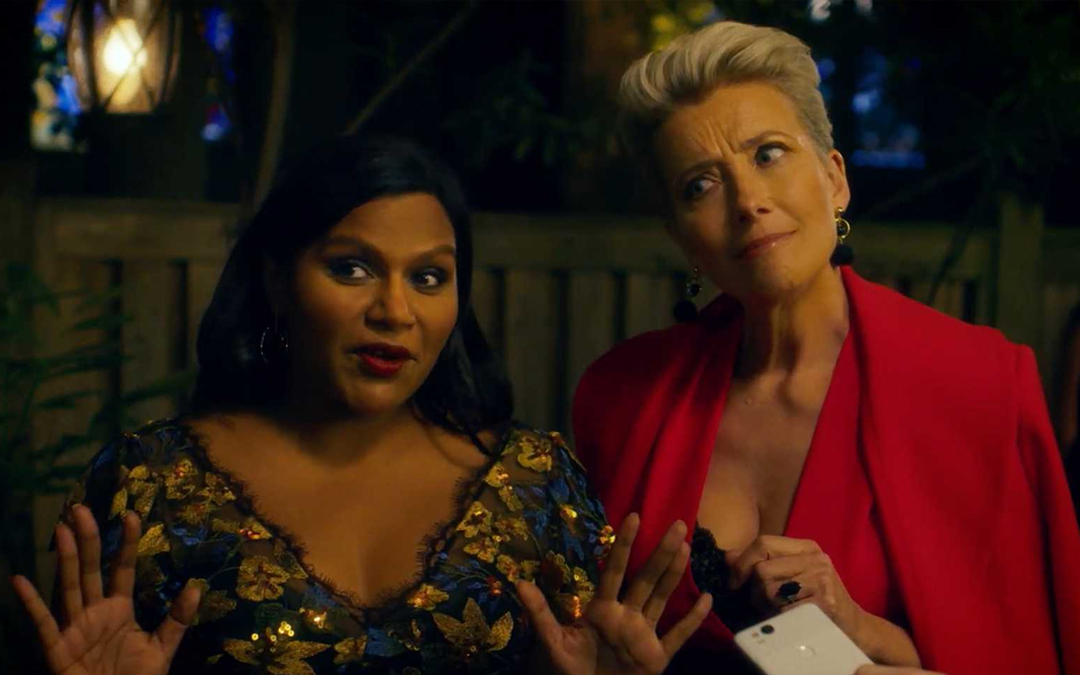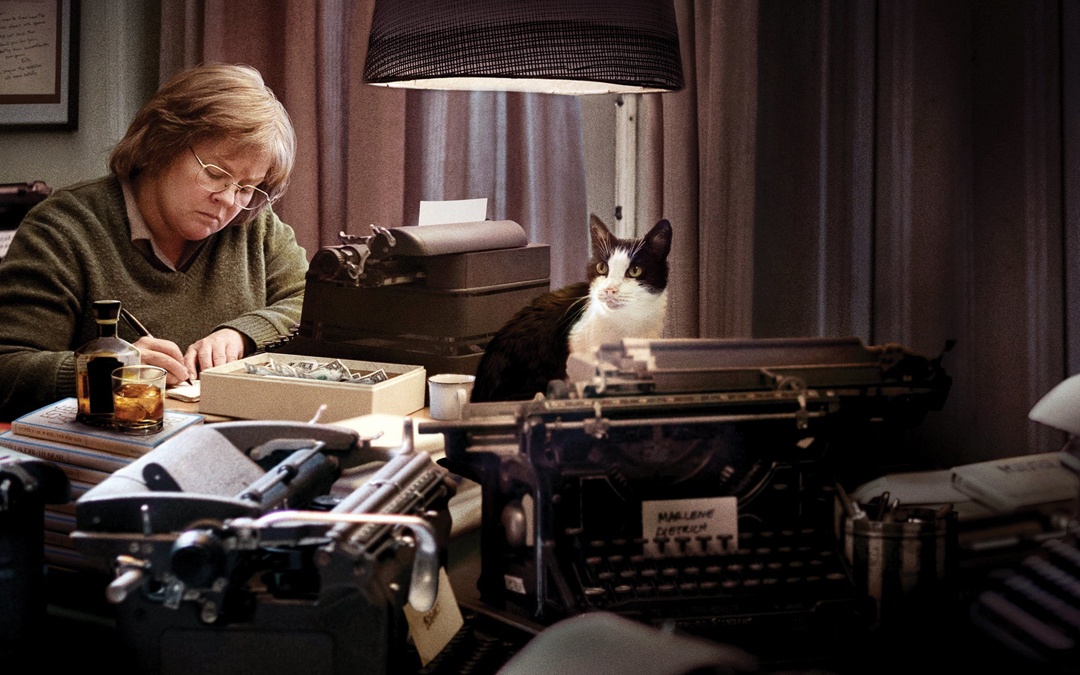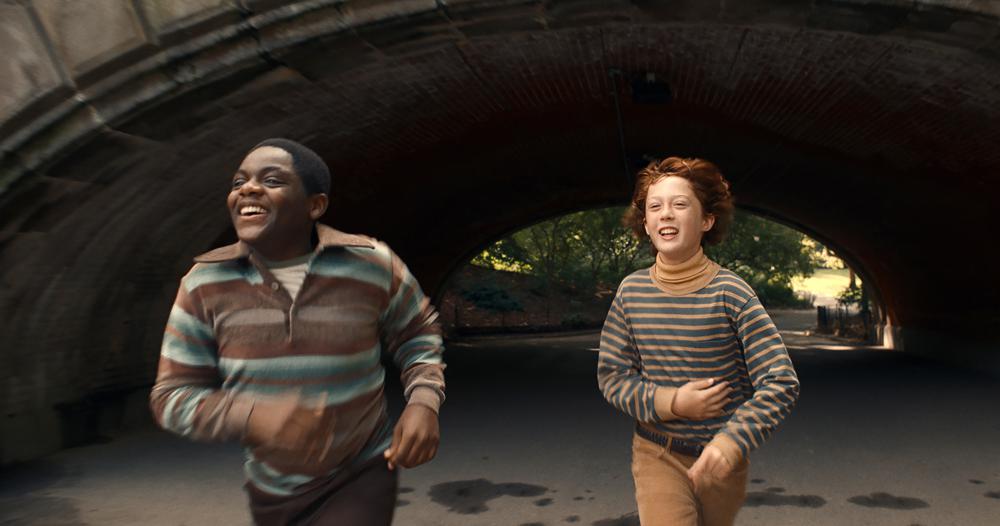All The Write Moves: 'Booksmart'
June 3, 2019
Since catching attention at Sundance in January, foul-mouthed comedy Booksmart — the feature directorial debut of actor Olivia Wilde — has won praise for its energy and heart, as well as for the endearing star turns by its young leads, Kaitlyn Dever and Beanie Feldstein. Written by Susanna Fogel, Emily Halpern, Sarah Haskins, and Katie Silberman, all of whom boast extensive comedy credits, Booksmart tells the story of Amy (Dever) and Molly (Feldstein). The two overachievers realize, the day before they graduate from high school, that they’ve missed out on a big part of the adolescent experience by spending all of their time studying. In order to undo their mistake, they decide to cram years of recklessness into a single evening. Anyone who’s ever seen a one-crazy-night movie can make an educated guess as to where the story goes. Yet, because the picture’s writing team used great care while defining every significant character as a fully-rounded individual, Booksmart offers more than comedic mayhem.
In It to Win It
Although Booksmart effectively has two leading characters, Molly is introduced first, and her actions drive most of the narrative, making her the de facto protagonist. That’s one reason why the screenwriters use a great deal of vivid detail while introducing Molly. The better viewers know her, the more invested they can become in the overall experience of the movie. Additionally, because Molly’s tendency to boss Amy around becomes an issue in the second act, having Molly dominate the first half of the movie helps us empathize with Amy’s resentment once it surfaces.
Getting back to the way Molly is introduced, we first see her in that most sacred of spaces for a high-school kid — her room at home. The walls are covered with inspirational images of Ruth Bader Ginsberg and Michelle Obama, as well as protest signs left over from marches in which we assume Molly and Amy participated together. The first actions that we see Molly take are just as important as her surroundings. While she prepares for her last day of high school, she listens to a motivational recording that starts out with standard-issue platitudes before shifting to purposeful vulgarity. The takeaway of the pep talk is that Molly earned her status as valedictorian not just because she’s intelligent, but because she worked harder than any of her classmates.
Together, the various elements of Molly’s introduction provide every point of reference that viewers need before Molly embarks on her odyssey. We learn that she’s a determined, goal-oriented feminist who views accolades as prizes won through fierce competition. Why do the details matter? Imagine for a moment how a less dimensional version of this character might come across — bereft of her sociopolitical drive, she might seem like a one-note control freak. The writers of Booksmart ensure that we contextualize Molly’s academic focus as just one aspect of her personality.
This approach helps with plotting as well as characterization. Because of the care with which Molly’s personality is introduced, the decision that Molly makes after the inciting incident (more on that in a moment) feels organic. We believe that she zealously pursues her primary goal in the movie because we already know she pursues everything zealously.
Takeaway: A well-constructed protagonist introduction can anchor an entire story.
Choose Your Adventure
The inciting incident occurs in an unlikely location — the unisex bathroom of a high school. While ensconced in a stall, Molly overhears several classmates talking smack about her, culminating in the crude suggestion that part of her anatomy is full of diplomas. Molly then bursts forth and skewers her critics by predicting that while they’re stuck in dead-end lives, she’ll be at Yale preparing for a glorious career. Molly’s triumph is short-lived, because each of her critics shares equally impressive future plans, revealing to Molly that sacrificing fun for academics was a choice rather than a necessity.
“You guys didn’t care about school,” she replies desperately. “No,” one of them replies. “We just didn’t care only about school.”
Superficially, this moment reminds us that not all inciting incidents are the same. The natural tendency for writers is to craft a scene in which a mission or a quest is presented to the protagonist, creating a binary choice — the protagonist is either a hero for accepting the challenge, or a coward for avoiding danger. The inciting incident of Booksmart is more complicated than that. Discovering that academics and fun are not mutually exclusive throws Molly’s world off its axis, but the discovery doesn’t prescribe any particular course of action. The scheme that Molly contrives, to go wild for just one night, is one of several choices that she could’ve made. She could, for instance, have chosen to do nothing at all.
Comparing the inciting incident of Booksmart to the paradigm of more conventional inciting incidents underscores the narrative purpose served by this essential inflection point of every mainstream screenplay. The inciting incident is the spark that lights a fuse leading to the explosion that is the movie’s climax, and if the story is character-driven rather than plot-driven, then the climax should be the juncture at which the protagonist evolves. Therefore, it doesn’t matter that the inciting incident of Booksmart lacks the element of a binary choice. Throwing Molly off her path is enough to get the story started.
Takeaway: Character-driven inciting incidents spin protagonists off their paths.
Be the Change
In one of the movie’s most resonant moments, Molly encourages a skeptical Amy to leave her comfort zone, or else both of them risk becoming dull nerds for the rest of their lives. “We are going to change our stories forever,” Molly says. It’s a powerful line, and not just because it helps push along the gradual process of drawing Amy from her shell. The line speaks to an opportunity each of us has, every single day of our lives, to become someone different — hopefully better — than the person we have been. After all, it’s not as if Molly proposes abandoning her and Amy’s grand plans for the future. She simply wants to ensure that she and her BFF have rounded life experiences.
On a deeper level, the line about “changing stories” speaks to something the writers of Booksmart do consistently well, even though the technique is a fairly well-established trope of teen movies. Throughout Booksmart, seemingly one-dimensional characters reveal surprising qualities. In the modern parlance that gets referenced during one of Booksmart’s final speeches, the characters are seen for their true selves. We discover that the rich jerk is lonely and sensitive. We learn that the girl with a promiscuous reputation dreams of shedding her high-school persona. There’s even an amusing pattern of revealing what teachers are like after hours.
Learning to see past people’s surfaces is fundamental to teen cinema because it’s also fundamental to real-life adolescence — ideally, experiences in high school and/or college allow all of us to shift our perceptions from simple categories of cliques and “types” to more nuanced understandings. The writers of Booksmart bake this concept into their script, nearly every scene of which has something to do with changes in both self-perception and the perception of others.
Like the movie’s inciting incident, this holistic approach to dynamic characterization epitomizes a principle that informs nearly every well-made, mainstream screenplay. It’s not enough to generate character arcs only for major characters, because restricting storytelling efforts in this way can lead to scripts that feel schematic. Flip side, if you provide arcs for every significant character — which is to say nearly anyone who appears in more than one scene — then your story will gain the interconnectedness of a living organism. Changes that character X experiences add meaning to changes that character Y experiences, and so on.
In practice, this results in rich moments along the lines of the penultimate sequence in Booksmart, during which Molly and Amy realize that their personal growth is part of larger journey shared by everyone in their graduating class.
Takeaway: Secondary and tertiary characters deserve their own arcs.
Written by: Peter Hanson
Peter Hanson is a Los Angeles-based writer, filmmaker and teacher. He directed the screenwriting documentary Tales from the Script, and he teaches at Pepperdine University and UCLA Extension. He provides script consulting at www.GrandRiverFilms.com.- Topics:
- Discussing TV & Film




